Genioglossus Muscle
Introduction
The genioglossus muscle is only the paired extrinsic muscles of the tongue. It is a fan-shaped muscle that contains the bulk of the body of the tongue. It originates from the mental spine of the mandible; it inserts onto the hyoid bone and the bottom of the tongue. It is innervated by the hypoglossal nerve (cranial nerve XII). The genioglossus is the primary muscle responsible for protruding (or sticking out) the tongue.
Histologically the genioglossus muscle has important type 2 fibers present in the anterior section of the genioglossus muscle, whereas the posterior portion of the muscles does not have a large portion of type 2 fibers present. The specific fibers present in the particular portion of the genioglossus muscle define the function of the muscle. For example, the anterior portion of the genioglossus contains type 2 fibers, and this suggests that this portion of the genioglossus muscle participates in phasic motion. The posterior portion while it does not include many type 2 fibers has significant muscle strength compared to the anterior portion of the genioglossus; because of this, there are suggestions that the posterior portion of the genioglossus maintains responsibility in the nasopharyngeal airway, as well as in the production of the sound of vowels.
Origin of Genioglossus Muscle
The Genioglossus muscle is the fan-shaped extrinsic tongue muscle that forms the majority of the body of the tongue. This arises from the mental spine of the mandible.
Insertion
Genioglossus muscle insertions are the hyoid bone and the base of the tongue.
Nerve supply
The genioglossus is innervated by the hypoglossal nerve, as are all muscles of the tongue excluding the palatoglossus. Innervation is the approach of the brain sending electrical impulses to the muscles of the body through a network of nerves. Each muscle acquires electrical impulses from the brain from a specific nerve. The genioglossus muscle acquires these electrical impulses of the brain from the cranial nerve XII, which is also called the hypoglossal nerve.
Blood supply
Blood is supplied by the sublingual branch of the lingual artery, a branch of the external carotid artery. It should also be noted that the genioglossus muscle obtains its blood supply from the lingual and facial arteries. Both the lingual and facial arteries are small branches of the carotid artery, which is the large blood vessel that drives up the neck and into the head/skull.
Function of Genioglossus Muscle
The left and right genioglossus muscles protrude from the tongue and also deviate towards the opposite side. When functioning together, the muscles depress the center of the tongue at its back.
Because the genioglossus muscle consists of four distinct muscle fibers, as well as two different fiber types, this extrinsic muscle is competent in performing a variety of different movements. Based on the specific portion of the genioglossus that is activated, some of the genioglossus muscle actions include:
- The anterior bundle is responsible for the forward and downward motion of the tongue.
- The inferior and posterior bundles assist with the forward movement of the rear portion of the tongue that extends into the throat.
- The middle bundle promotes the tongue to protrude from the mouth (as with sticking the tongue out of the mouth).
When these four muscular bundles of the genioglossus perform together, some additional actions include:
- The depression at the central part of the tongue
- The side-to-side motion of the tongue
- Increasing the size of the pharyngeal, or throat, area of the upper respiratory tract
- Controlling the action of the hyoid bone and the temporomandibular joint (the jaw joint that can be palpated near the ear).
Aside from the specific movements facilitated by the genioglossus, these muscles also play an important role in several different functions related to breathing, digestion, and speaking. For example, the pharynx and upper portions of the respiratory tract are prone to tumble when the muscles of the tongue are too relaxed. Therefore, the genioglossus allows to enlarge and provide stability to these passageways to better facilitate respiration.
In much the same way, the action of the genioglossus, along with the other three extrinsic muscles, is essential in the formation of the bolus, or wad of food, that is created when chewing. And because the genioglossus is responsible for maintaining the pharynx open, this muscle is also needed when swallowing, by producing a direct route from the mouth to the gastrointestinal tract.
When speaking, the shape of the tongue is responsible for the various sounds produced by the mouth. The genioglossus, in particular, aids in the production of different phonemes, or sounds that distinguish one letter or word from another. The posterior bundle of the genioglossus is also especially important for the invention of vowel sounds when speaking.
Clinical significance
The genioglossus is a muscle reliable for airway dilation. When the muscles have decreased function, it can lead to airway constriction/obstruction. This condition develops significantly during sleep as a patient will have multiple airway collapses while sleeping, leading to hypoxemia during sleep, which has been shown to increase the chances of strokes and sudden cardiac death. How this happens is that during REM (rapid eye movement) sleep the genioglossus muscle tends to relax and it is during this concern that obstructive sleep apnea can occur as the muscles are no longer participating in airway dilation making the airway additional prone to constriction/obstruction. The way to distinguish this condition is for patients who suffer from this to use a continuous positive airway pressure, also known as a CPAP while sleeping, which will permit continued airway dilation and prevention of obstructive sleep apnea. Obstructive sleep apnea has generally been established to occur following a uvulopalatopharyngoplasty, also directed to as a UPPP.
Another clinical significance of the genioglossus muscle is that it can assist test the functioning of the hypoglossal nerve. The patient will be questioned by a physician to stick out their tongue. Damage to the hypoglossal nerve will cause the tongue to deviate to the side of the neural lesion, permitting the physician to know which peripheral portion of the hypoglossal nerve is damaged, the right or the left.
Myofunctional therapy is important for restoring the function of the genioglossus muscles after surgery or trauma or nerve injury. The publications deliver that cervical trauma (whiplash) can negatively control the function of the tongue and osteopathic treatment can restore lingual function.
To assess the tension and tone of the tongue, it is probable to use a glove and gauze and to pull the tongue out (passive protrusion), or put a finger to the side, above and below the tongue when it is protracted, to asses its strength and any compensations (with the neck, eyes, or the jaw).
Treatment
A surgical procedure where the tongue muscles that are attached to the lower jaw are pulled forward, making the tongue firmer and less collapsible during sleep. In this procedure, a small window of bone is made in the lower jaw, and the portion of bone along with the attachment for the tongue is pulled forward and done by a small screw or a plate in the outside of the bony surface.

Nerve electrical stimulation plays an increasingly significant role in OSA treatment, particularly in those patients who do not tolerate CPAP. The outcome of electrical stimulation is the hypoglossal nerve (Nerve XII), the motor nerve that innervates the tongue muscles except for the palatoglossus. Through stimulation of precise hypoglossal nerve fibers, the upper airway can be opened by protruding the tongue.
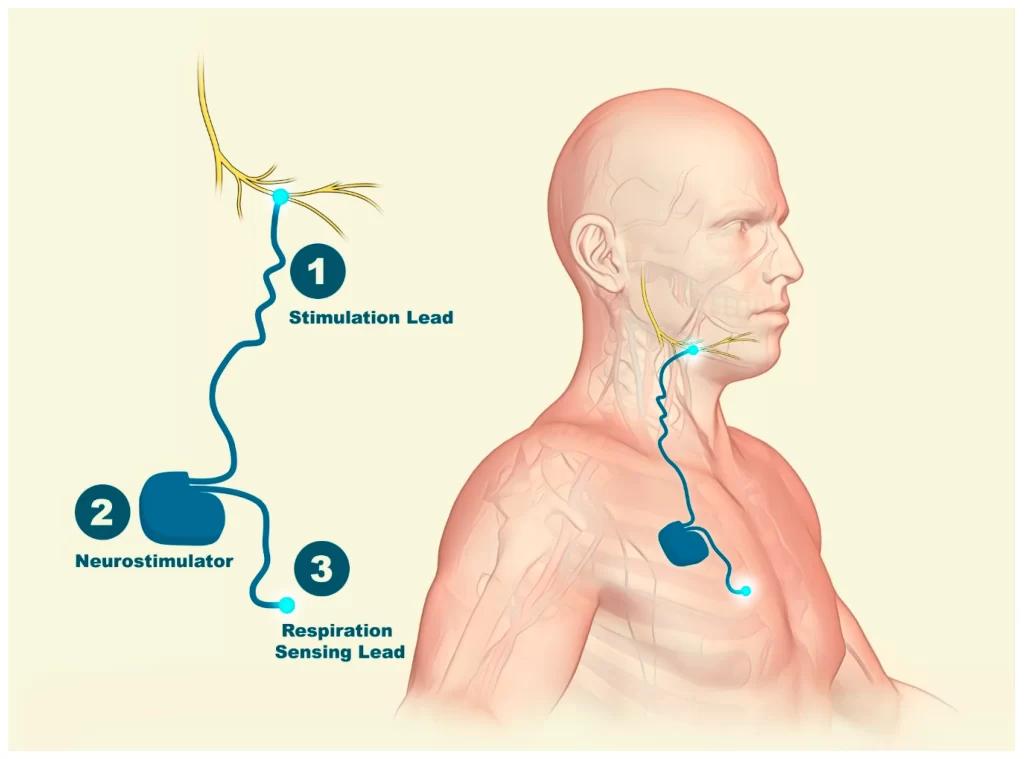
Hypoglossal nerve stimulation machines typically comprise an implantable pulse generator (IPG) that is situated surgically in an infraclavicular subcutaneous pocket superficial to the pectoralis significant muscle within the chest wall. An electrode cuff attached to the IPG covers the distal portion of the hypoglossal nerve. These hypoglossal nerve stimulation methods can incorporate an implantable chest sensor that monitors respiratory effort. The surgical operation is performed under general anesthesia and also started with the identification of the hypoglossal nerve. An intimate acquaintance with nerve XII anatomy is needed, along with intraoperative neuromonitoring, to accurately place the stimulation electrode for selective UAS.
Exercise of Genioglossus Muscle
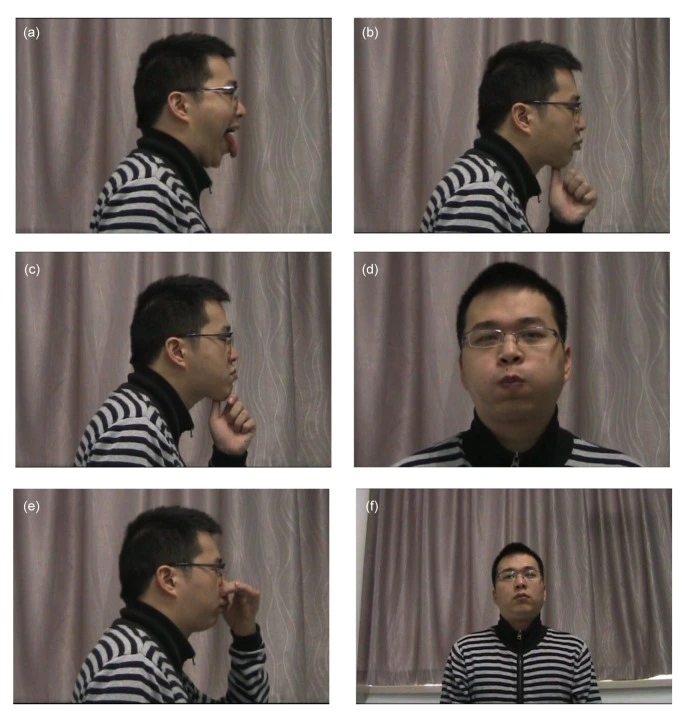
(a) Open mouth and stretch tongue ten times every daytime and night
(b) Use the thumb pad to massage the submental place for one minute every day
(c) Use your thumb to push the chin forward and also upward ten times every day
(d) Blow out the cheeks ten times a daytime for at least five seconds per time
(e) Hold the nose, close the mouth, and blow (Valsalva maneuver) ten times a day for at least five seconds each time; (f) Close the mouth, inhale and exhale gradually and deeply through the nose 20 times every night.
The frequency and time were created and adjusted according to the compliance of patients. Before the exercises, patients of the exercising group were asked to do as many as probable of the moves within seven days. Our doctors recorded the frequency and time in which patients could demand on exercising, then the minimum frequency and time were sorted out as mentioned above. All the patients existed under medical supervision by telephone.
Patients who suffered illnesses such as upper respiratory tract infections were told to discontinue the exercises until they recovered. Six patients experienced flu and all recuperated in one week.
FAQ
Why is it called genioglossus?
The name of the genioglossus muscle arrives from the Greek words genion (chin) and glossa (tongue). The genioglossus muscles are innervated by the cranial nerve XII, which is also known as the hypoglossal nerve. This muscle receives its blood supply from both the lingual artery and the facial artery.
What is the function of the genioglossus?
The genioglossus is reliable for the forward protrusion of the tongue, as when sticking one’s tongue out of the mouth. The genioglossus also assists with the side-to-side movement of the tongue.
Does the genioglossus retract the tongue?
The genioglossus is reliable for the forward movement, or protrusion, of the tongue. Two additional extrinsic muscles of the tongue, the hyoglossus, and styloglossus are responsible for the retraction of the tongue.
Where does the genioglossus muscle originate?
The origin of the genioglossus muscles is the superior mental spine on the posterior surface of the symphysis menti. This origin point can be located by inserting one’s finger into the mouth and touching slightly below the lower teeth of the chin region.
Why genioglossus is called a life-saving muscle?
The genioglossus (GG, tongue) muscles play an important part in supporting upper airway patency. The GG is responsible for tongue protrusion and stiffens the tongue and controls posterior tongue displacement and upper airway closure. The GG is also a phasic respiratory muscle.

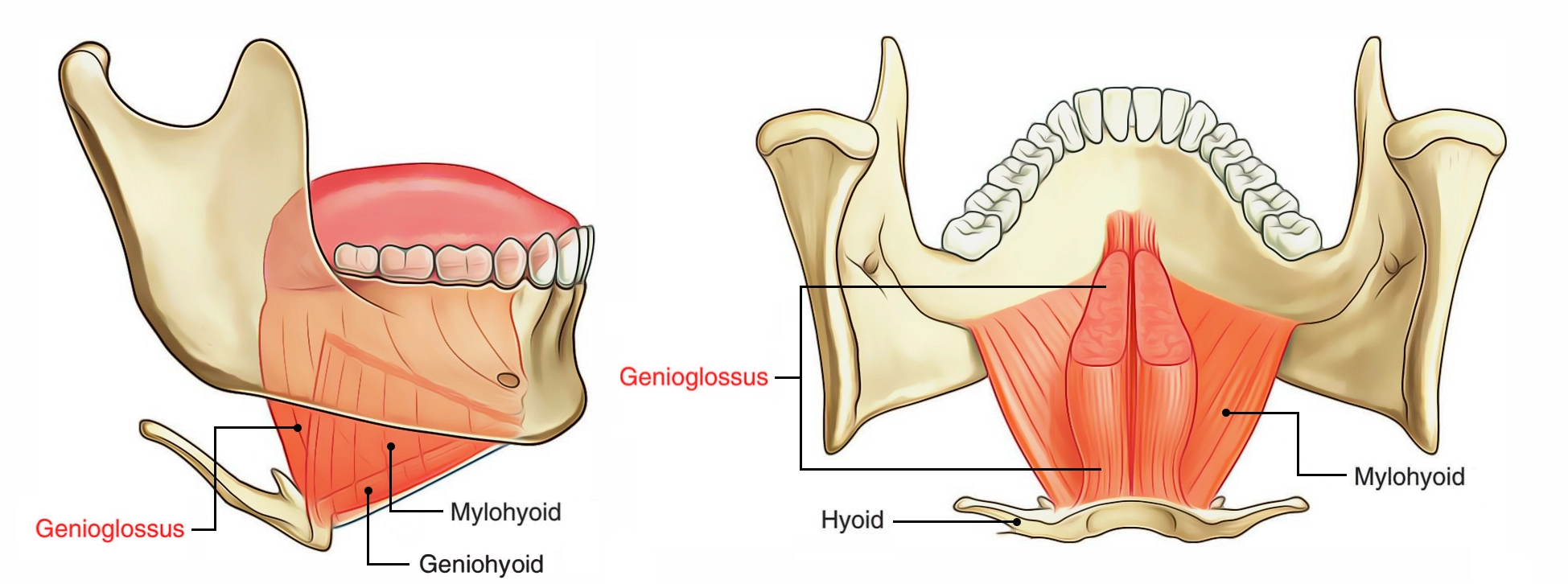
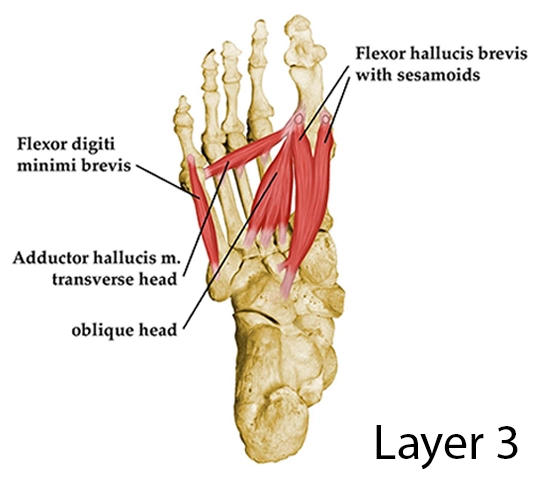
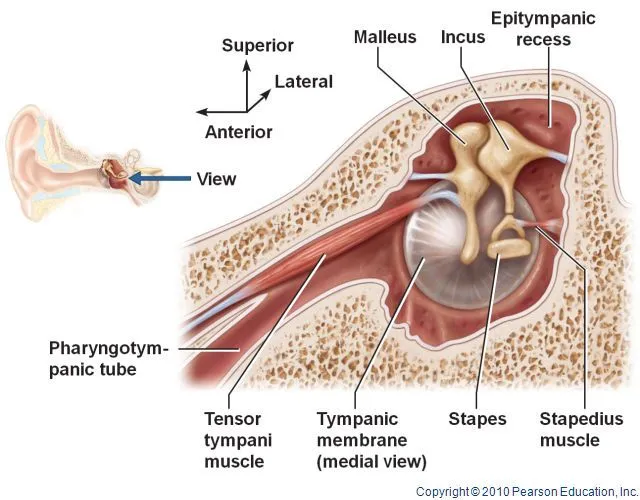
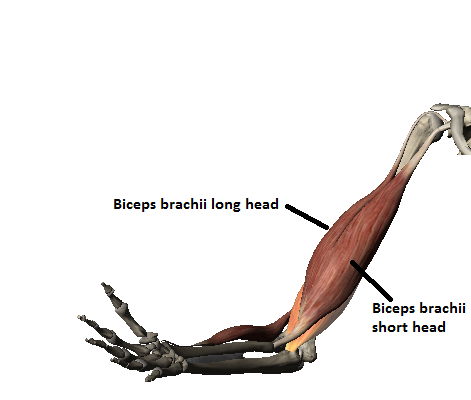
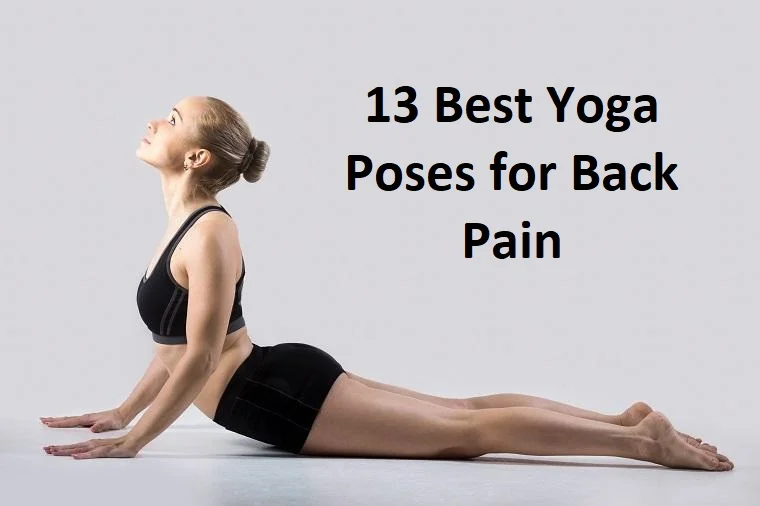

2 Comments